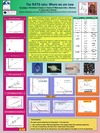Please use this identifier to cite or link to this item:
https://accedacris.ulpgc.es/jspui/handle/10553/9993
| DC Field | Value | Language |
|---|---|---|
| dc.contributor.author | Gómez, May | en_US |
| dc.contributor.author | Fernández-Urruzola, Igor | en_US |
| dc.contributor.author | Herrera-Ulibarri, Alicia | en_US |
| dc.contributor.author | Maldonado Uribe, Federico | en_US |
| dc.contributor.author | Martínez, Ico | en_US |
| dc.contributor.author | Osma, Natalia | en_US |
| dc.contributor.author | Packard, Theodore T. | en_US |
| dc.date.accessioned | 2013-04-23T05:00:20Z | - |
| dc.date.accessioned | 2018-06-18T06:54:09Z | - |
| dc.date.available | 2013-04-23T05:00:20Z | - |
| dc.date.available | 2018-06-18T06:54:09Z | - |
| dc.date.issued | 2011 | en_US |
| dc.identifier.uri | https://accedacris.ulpgc.es/handle/10553/9993 | - |
| dc.description.abstract | The relationship between respiration and the activity of the electron transport system (ETS) is an unresolved issue that begs more understanding, because measuring ETS activity or its equivalent, potential respiration, is the fastest and most synoptic way of assessing respiration (R ) in ocean space. Furthermore, this topic is an entry point to the understanding of respiratory control. As we know from the variability in respiration measurements, in Kleiber’s Law, and in past R/ETS studies, many factors can alter respiration. Temperature, nutrient limitation, age, size, temporal periodicity, and activity levels are among these factors. To model or to measure respiration accurately, these factors need to be understood. | en_US |
| dc.format | application/pdf | es |
| dc.language | eng | en_US |
| dc.rights | by-nc-nd | es |
| dc.source | 5th International Zooplankton Production Symposium, 13-18 de marzo.Pucón, Chile, 2011 | en_US |
| dc.subject | 251001 Oceanografía biológica | en_US |
| dc.title | The R/ETS ratio: Where we are now | en_US |
| dc.type | info:eu-repo/semantics/conferenceobject | en_US |
| dc.type | Conference poster | en_US |
| dc.identifier.absysnet | 678780 | - |
| dc.investigacion | Ciencias | en_US |
| dc.rights.accessrights | info:eu-repo/semantics/openAccess | es |
| dc.type2 | Póster de congresos | en_US |
| dc.utils.revision | Sí | en_US |
| dc.identifier.ulpgc | Sí | en_US |
| item.fulltext | Con texto completo | - |
| item.grantfulltext | open | - |
| crisitem.author.dept | GIR ECOAQUA: Ecofisiología de Organismos Marinos | - |
| crisitem.author.dept | IU de Investigación en Acuicultura Sostenible y Ec | - |
| crisitem.author.dept | Departamento de Biología | - |
| crisitem.author.dept | GIR ECOAQUA: Ecofisiología de Organismos Marinos | - |
| crisitem.author.dept | IU de Investigación en Acuicultura Sostenible y Ec | - |
| crisitem.author.dept | Departamento de Biología | - |
| crisitem.author.dept | GIR ECOAQUA: Ecofisiología de Organismos Marinos | - |
| crisitem.author.dept | IU de Investigación en Acuicultura Sostenible y Ec | - |
| crisitem.author.dept | GIR ECOAQUA: Ecofisiología de Organismos Marinos | - |
| crisitem.author.dept | IU de Investigación en Acuicultura Sostenible y Ec | - |
| crisitem.author.orcid | 0000-0002-7396-6493 | - |
| crisitem.author.orcid | 0000-0001-7287-3503 | - |
| crisitem.author.orcid | 0000-0002-5538-6161 | - |
| crisitem.author.orcid | 0000-0002-7676-2066 | - |
| crisitem.author.orcid | 0000-0002-5880-1199 | - |
| crisitem.author.parentorg | IU de Investigación en Acuicultura Sostenible y Ec | - |
| crisitem.author.parentorg | IU de Investigación en Acuicultura Sostenible y Ec | - |
| crisitem.author.parentorg | IU de Investigación en Acuicultura Sostenible y Ec | - |
| crisitem.author.parentorg | IU de Investigación en Acuicultura Sostenible y Ec | - |
| crisitem.author.fullName | Gómez Cabrera, María Milagrosa | - |
| crisitem.author.fullName | Fernández Urruzola, Igor | - |
| crisitem.author.fullName | Herrera Ulibarri, Alicia Andrea | - |
| crisitem.author.fullName | Maldonado Uribe, Federico | - |
| crisitem.author.fullName | Martínez Sánchez, Ico | - |
| crisitem.author.fullName | Osma Prado, Natalia | - |
| crisitem.author.fullName | Packard, Theodore Train | - |
| Appears in Collections: | Póster de congreso | |
Page view(s)
166
checked on Jul 12, 2025
Download(s)
64
checked on Jul 12, 2025
Google ScholarTM
Check
Share
Export metadata
Items in accedaCRIS are protected by copyright, with all rights reserved, unless otherwise indicated.
